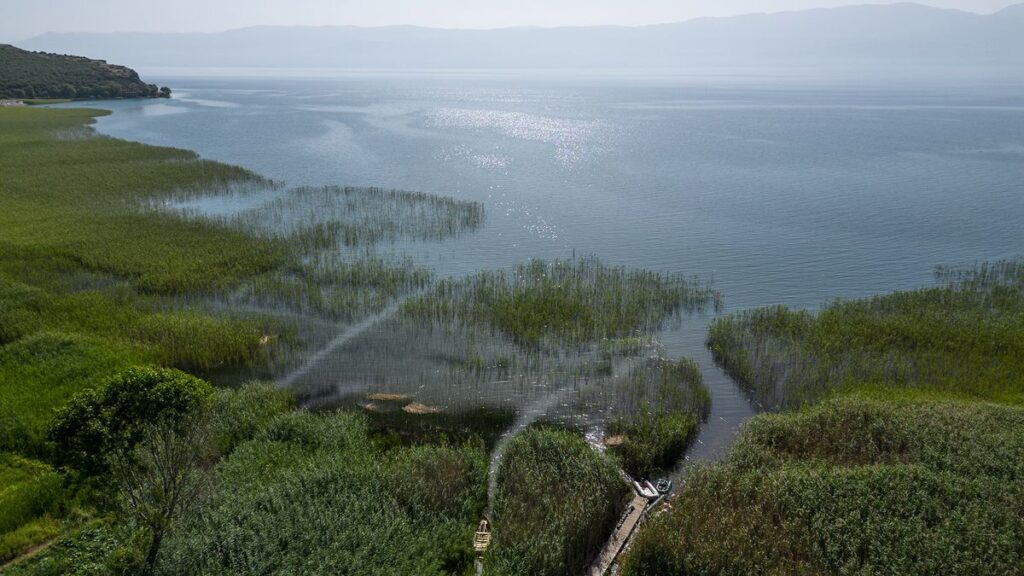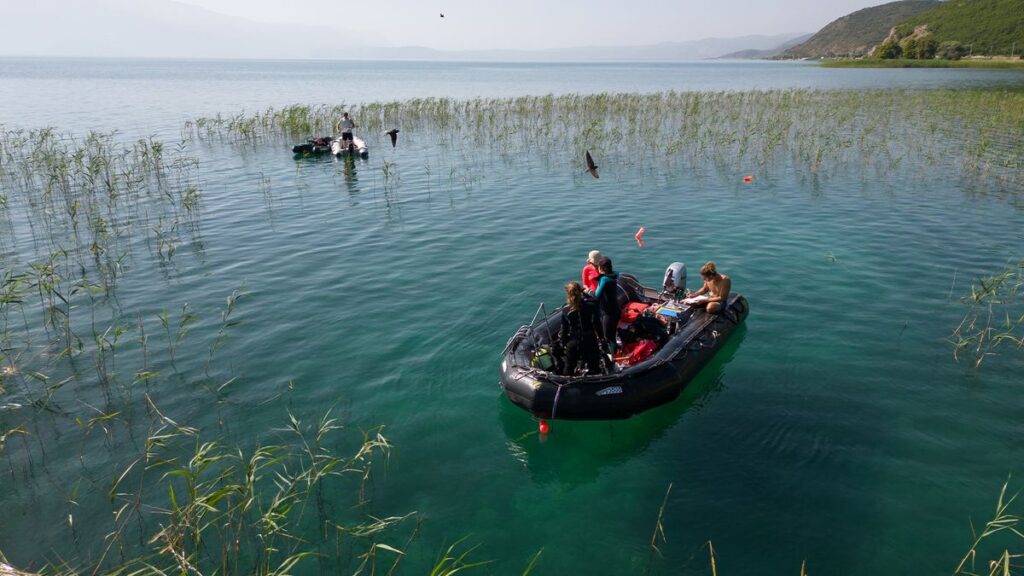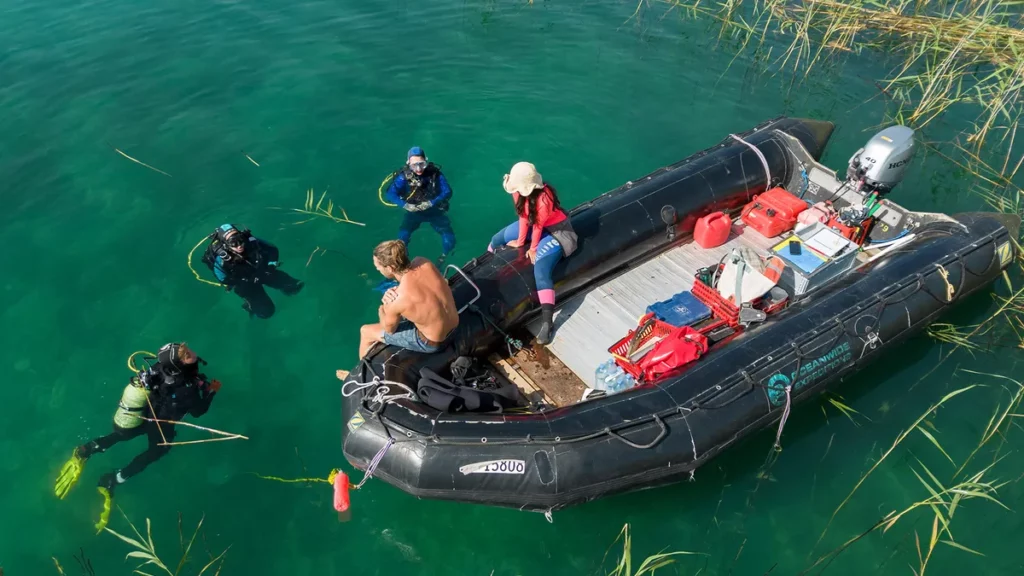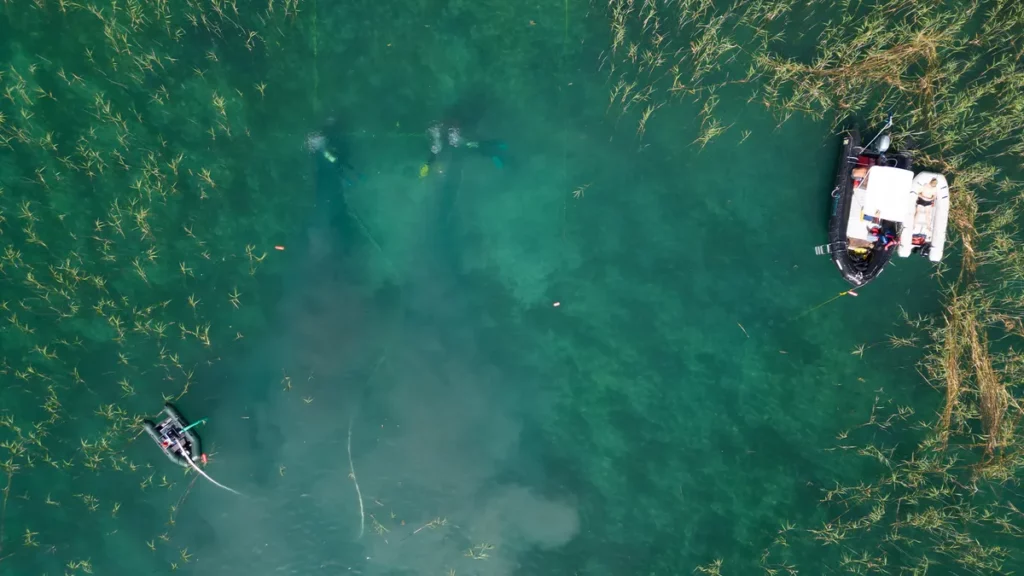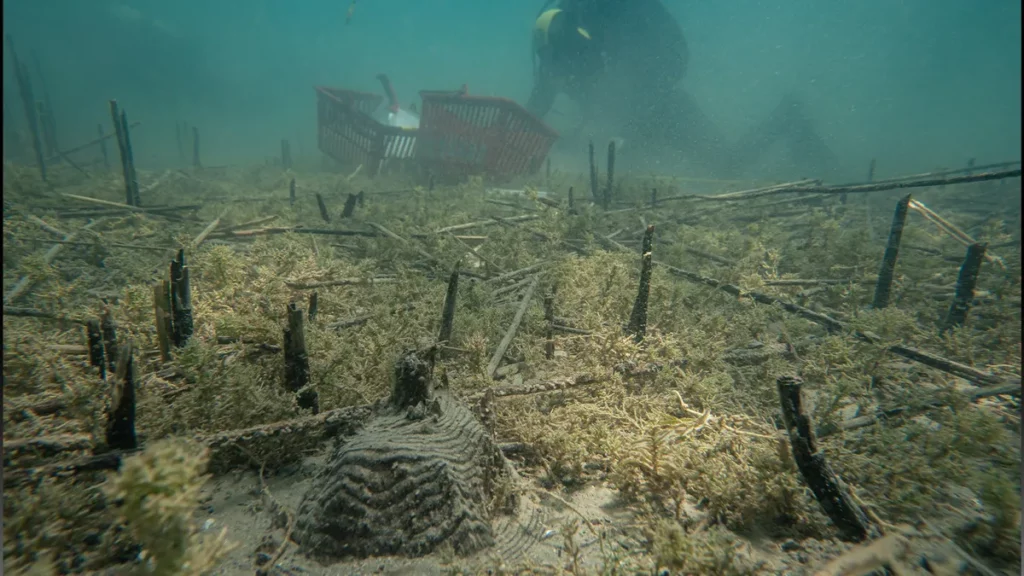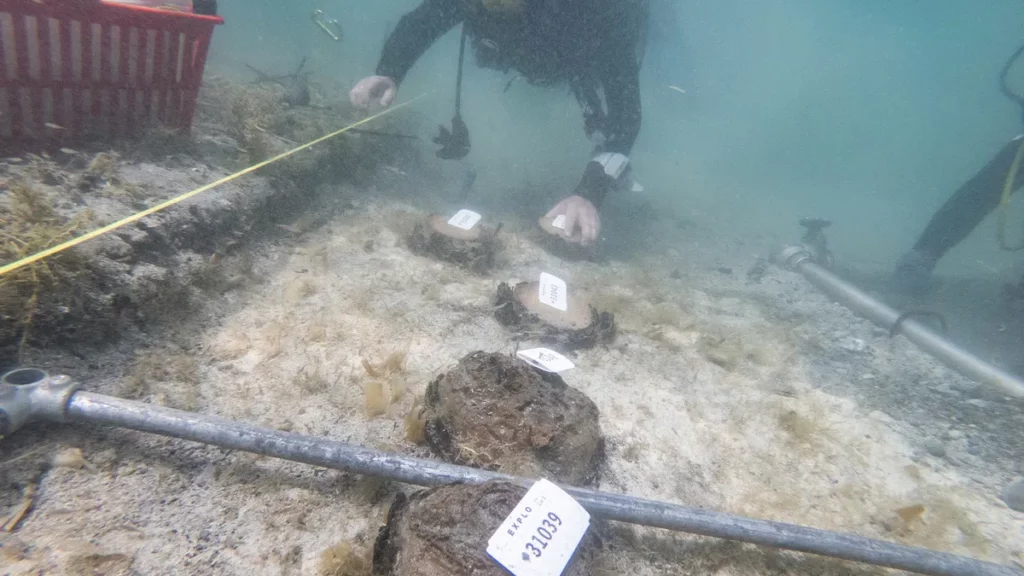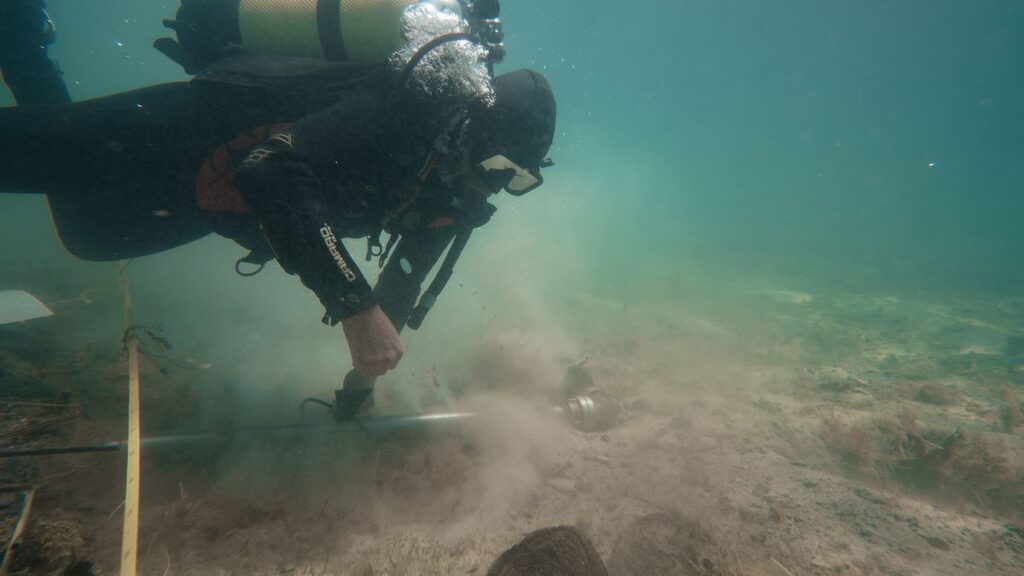Huge Ancient Sarayini Underground City Is Twice As Large As Previously Thought
Scientists knew the ancient underground city they examined was huge, but now it’s obvious it’s twice as large as previously thought! What secrets does this mysterious ancient place hide? How many underground tunnels, galleries, chambers, and unknown rooms still await discovery?
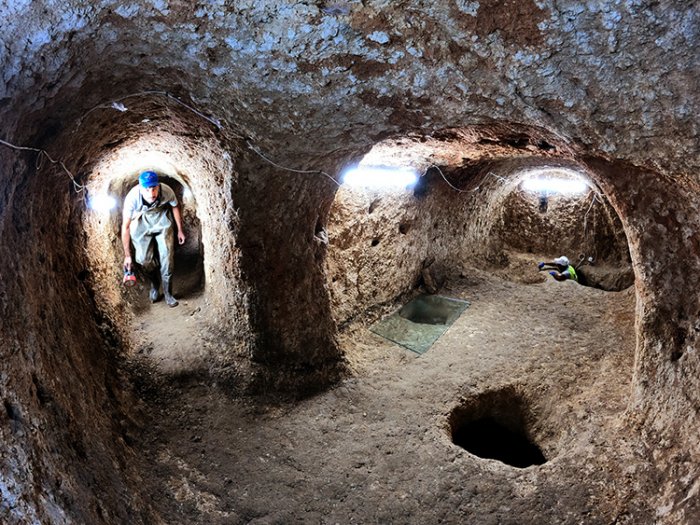
The ancient underground city in Sarayönü, a district of Konya in Turkey, dates back to the Roman period. When first examined by archaeologists, it was thought the subterranean city covered an area of 5000 m2, but a recent investigation reveals this enigmatic ancient place is at least 20,000 square meters, if not even more!
In co-operation with the Ministry of Culture and Tourism and Sarayönü Municipality, scientists are investigating the ancient underground city for the second year.
What has been discovered so far is fascinating. There are dozens of underground rooms connected to each other by tunnels of different lengths and widths. Many corridors, tunnels, and galleries are still waiting to be cleaned, so it is currently difficult to determine where they lead.
Is Sarayini Turkey’s Largest Underground City In Horizontal Architecture?
The history of the subterranean place, which includes domestic spaces, connected galleries, room-like living spaces, water wells, furnaces, workshops, chimneys, oil lamps for lighting, cellars, warehouses, ventilation, and spaces whose quality has yet to be investigated, dates back to the 8th century.
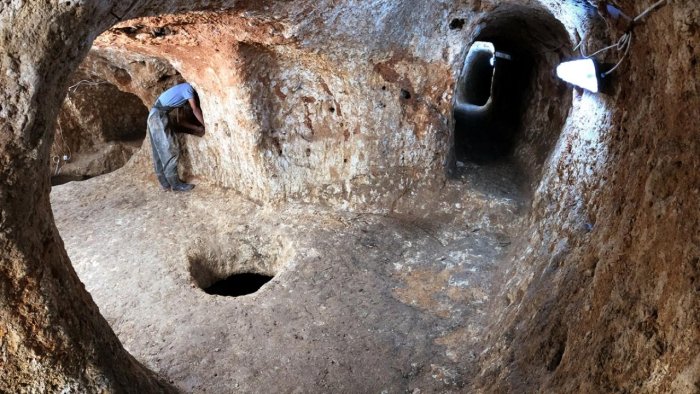
Hasan Uguz, archaeologist and head of excavations of Konya Museums Directorate, said that based on the findings, scientists determined that “the local Christian people used the underground city in the 8th century to protect themselves from the raids that lasted for 150 years” the Konya News reports.
Uguz explained that elderly people who had lived here all their lives used to play in the tunnels as children. Locals knew a very large underground city was here, but no one could even guess how vast it was. Scientists did not think the underground tunnels, corridors, and rooms could spread over such a large area.
Uguz said it is possible this is the largest underground city in Turkey ever discovered in horizontal architecture.
“We may have found one of the largest underground cities in Central Anatolia. The rumors of the people of the region and the collapses in different places show us that the underground city can spread over a very wide area and that it can be a very long tunnel system.
The openings and dents we caught give positive signals at this point. It is an important historical and tourist discovery, as no other underground city is known in the region,” Uguz told the Konya News.
Ancient Sarayini Underground City Was A Comfortable Place
“In our research, we noticed that 19th-century European travelers refer to this region as Sarayini. The people living here also say this. The real name of this place is Sarayini. It has been determined that the caves resemble a palace because of their very spacious, comfortable, interconnected, and high-quality-of-life architecture, and in this sense, it is called Sarayini,” Uguz told the Anadolu Agency.

The archaeologists explained that scientists discovered a very wide corridor resembling what could be best described as a main street. On the left and right sides of the corridor were galleries connected by tunnels and other corridors.
The ancient underground city gives the impression of being prepared for people to live as comfortably as possible, almost like residing in a palace.
In an interview with the Anadolu Agency, Uguz said the archaeological investigations continue. During excavations, the science team discovered altar-type tombstones, tomb stelae made in the Roman period, sophisticated artificial walls built, and a north-south oriented structure reminiscent of a wooden cross.
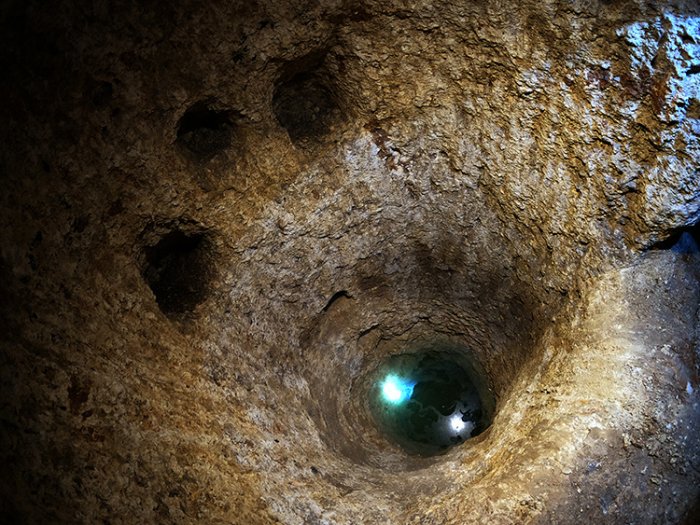
Uguz explained that the underground city’s human capacity and exact size will become clear as the work progresses.
Soil currents coming from some submerged places with water filled the spaces between 30 and 80 cm. After the spaces are cleaned and exposed, the capacity and size of human accommodation will become clear. There are domestic spaces and interconnected galleries that excite us.
The most important thing for us is the discovery of this place and the start of the work. This underground mystery, how people lived here, how these places were created at that time attracts attention,” Uguz said.
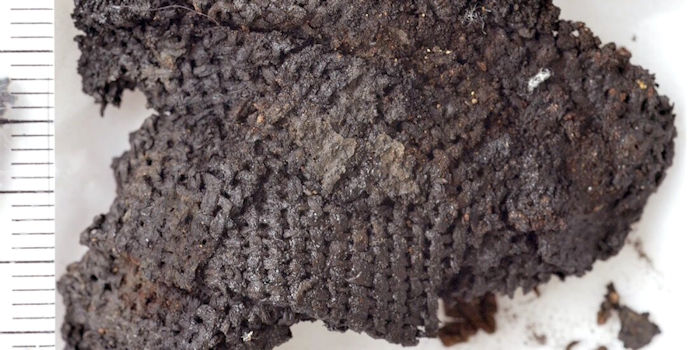
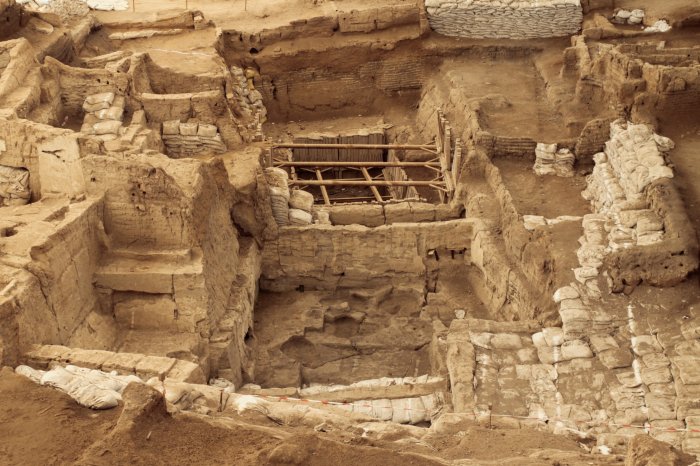

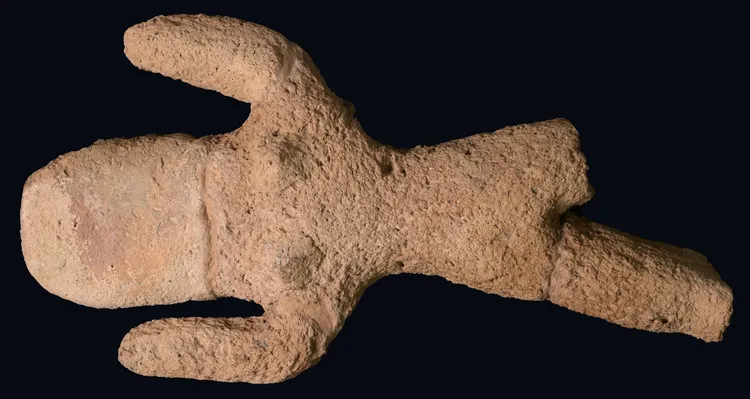
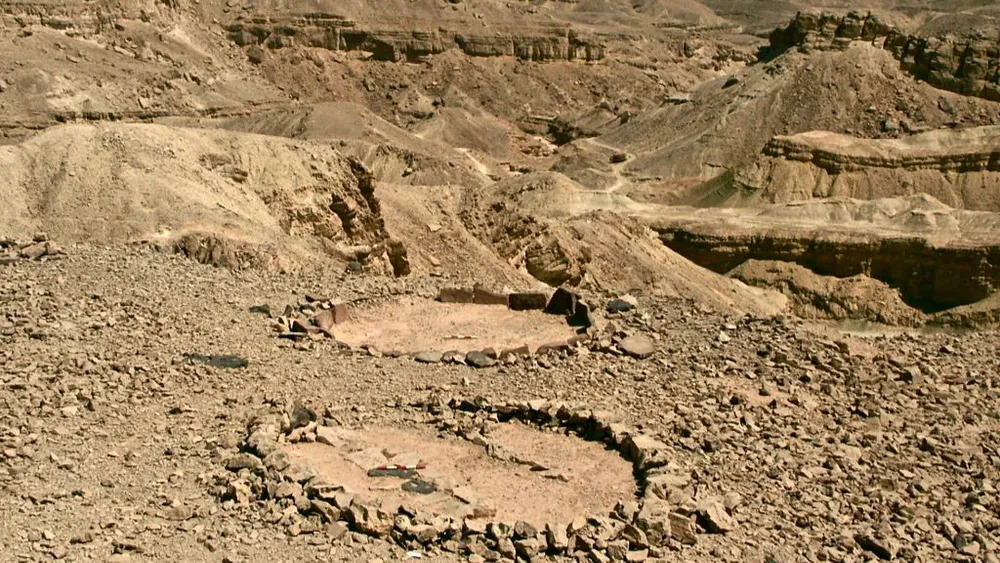


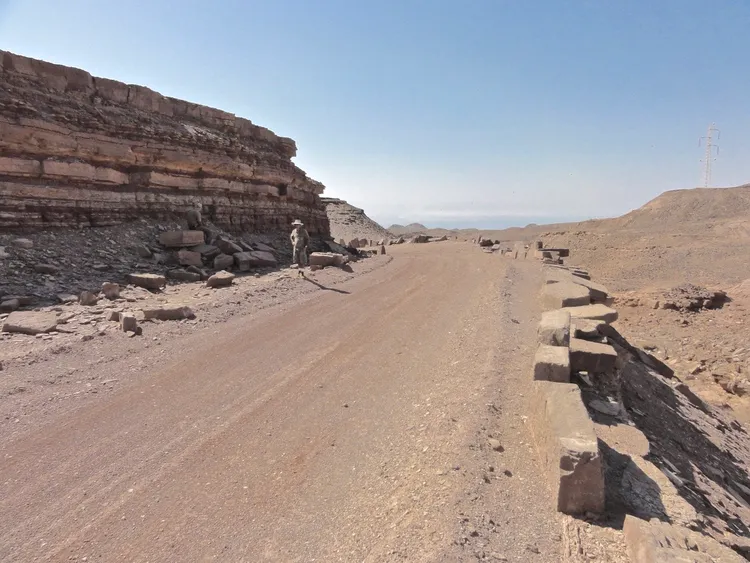
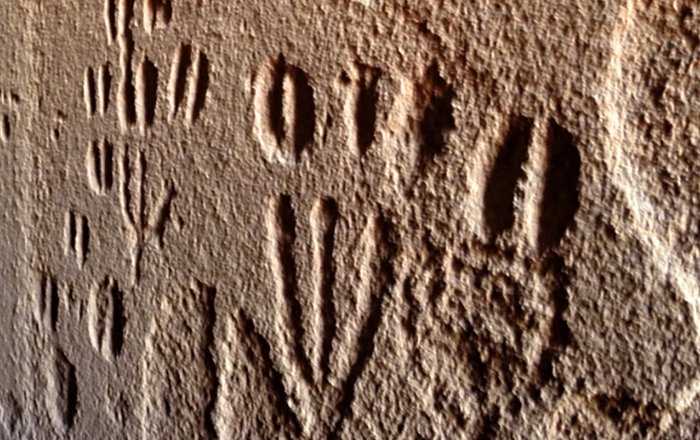





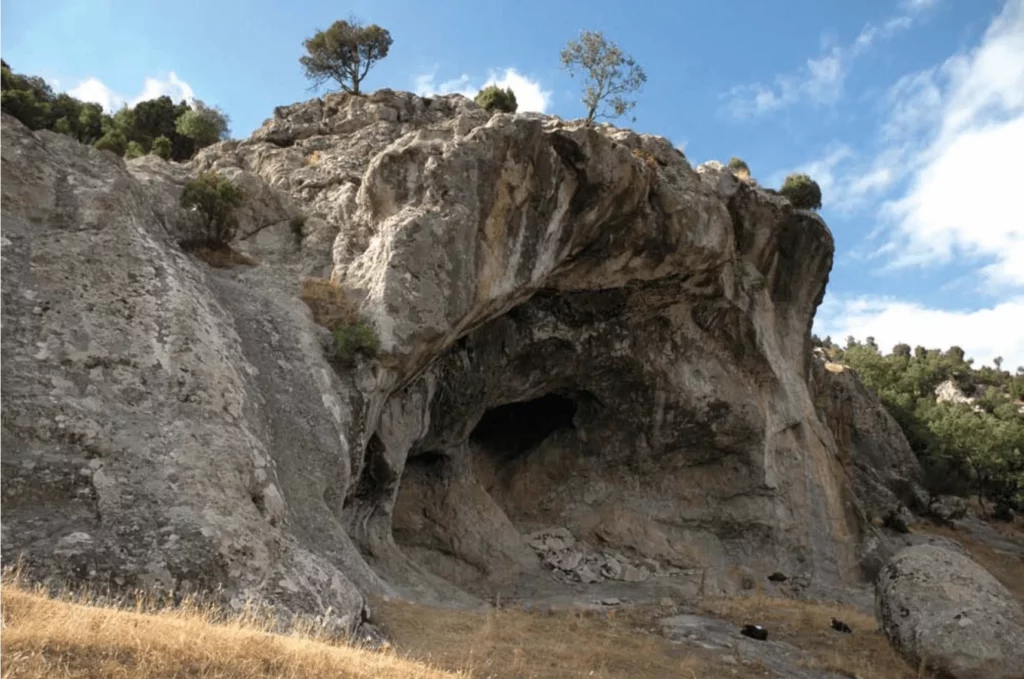
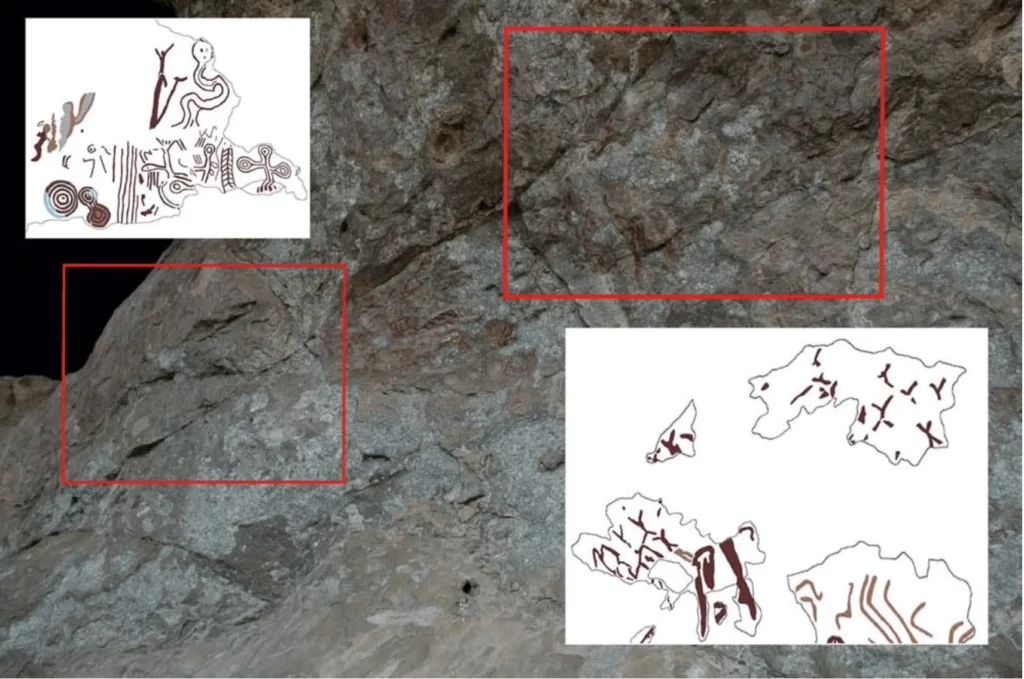
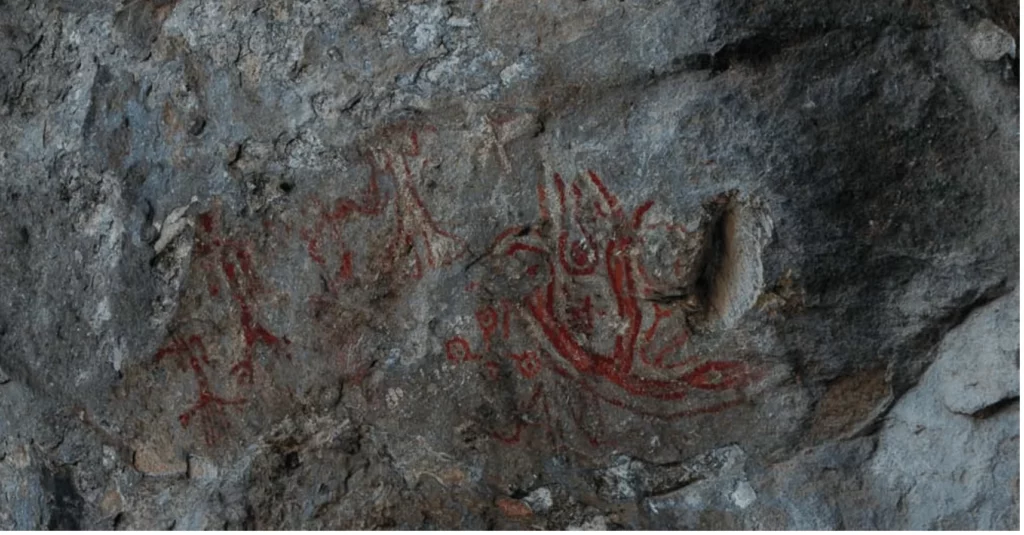
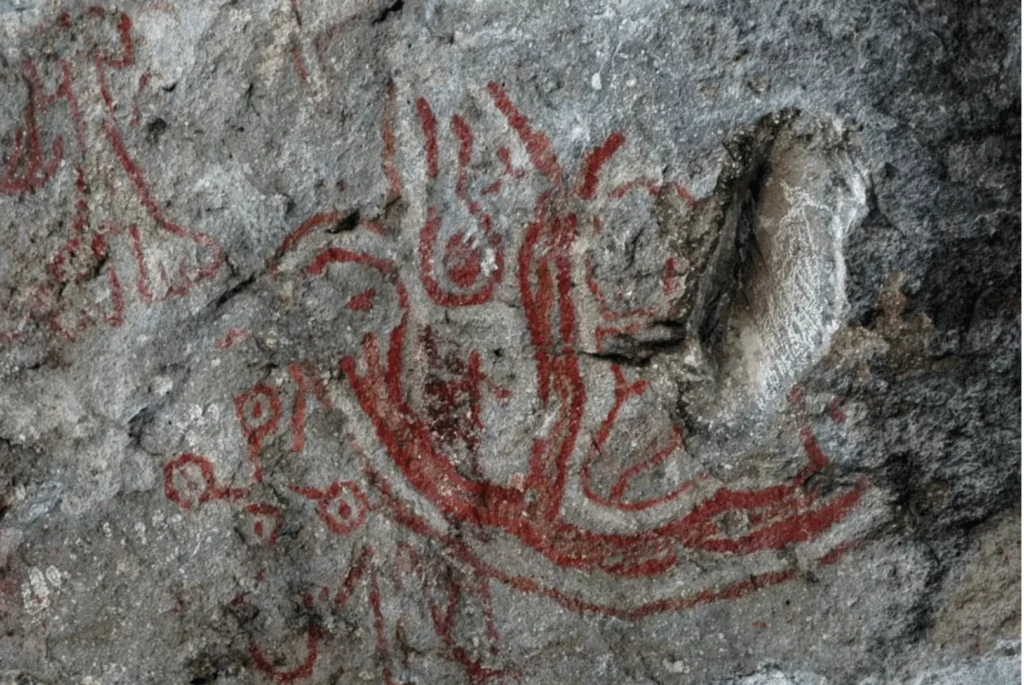


![Europe's oldest known village teetered on stilts over a Balkan lake 8,000 years ago Archaeologists in the Balkans have discovered the likely remains of an 8,000-year-old village built out over an ancient lake — the earliest-known village of any kind in Europe. The lake, located on the border between Albania and North Macedonia, holds hundreds of tree-trunk stilts that the archaeologists believe formed the foundations of the prehistoric village. The researchers can't yet estimate the settlement's original size — but their discovery of a defensive palisade of tens of thousands of wooden spikes, now underwater, indicates the village was relatively large. Albert Hafner, an archaeologist at the University of Bern in Switzerland who led the excavations, told Live Science that divers sampled wood from the submerged tree trunks and wooden spikes near the Albanian village of Lin on the western shore of Lake Ohrid a few weeks ago. The results of dating tests won't be available for months. But Hafner said the submerged wood is probably the same age as wooden foundations unearthed on the shore, which his team determined date from between 5800 B.C. and 5900 B.C. This would mean it's the oldest settlement archaeologists have found anywhere in Europe, he said. Hafner's team also found evidence of similar "pile dwellings" built over the water at the underwater prehistoric site of Ploča Mičov Grad on the eastern shore of the lake — part of North Macedonia — but those remains date to a few hundred years later. It now seems both villages were built on opposite sides of the lake in phases over hundreds of years, and that the later building phases had obscured the earliest, he said. "It seems to be quite typical that we have multiple phases of settlements, with sometimes long gaps in between," he said. "It now looks like Lin dates mostly from the sixth millennium [B.C.] in several phases, starting in about 5900 and ending in 5000." First farmers Hafner has led the EXPLO project for several years, examining lakes in the Balkans for traces of settlers from Anatolia — now Turkey — to Europe about 8,000 years ago. They are thought to be the first people to bring farming to Europe from around Mesopotamia. The early farmers interbred with hunter-gatherers who had already occupied Europe since about 45,000 years ago during the Upper Palaeolithic period, and who probably arrived from Africa via the eastern shores of the Mediterranean. And both ancestries interbred with nomadic proto-Indo-European peoples like the Yamnaya, who arrived in Europe from the Eurasian Steppe about 5,000 years ago. Most modern Europeans show a genetic mix of all three ancestries. Hafner explained that the many large lakes in the Balkans region held clear traces of the early migration from Anatolia. Lake dwellers Hafner's team has so far investigated more than half a dozen sites across the Balkans. Research into some of the lake settlements was conducted in the 1960s. But the latest excavations use refined techniques like very accurate radiocarbon dating and dendrochronology, which can determine when logs of wood were felled by looking at tree growth rings, Hafner said. Most of the former piles and stilts underwater near Lin are now covered by silt, but a few protrude from the lake floor. And archaeologists are unsure if the settlement was built in deep water or above mostly marshy ground. Ancient people were likely drawn to the lakes because of water and plants there. But exactly why prehistoric people chose to build their houses on piles or stilts above a lake or wetland isn't clear — though the practice is seen throughout Europe, from the Balkans to the Baltic. Hafner thinks that under normal conditions, it would have been easy to get between houses with dugout canoes. But the large palisade of wooden spikes indicates the village was sometimes attacked, he said; and houses on the water were more easily defended (although perhaps not always successfully).](https://archaeology-world.com/wp-content/uploads/2023/09/Balkan-lake-1.1-1038x576.webp)
![Europe's oldest known village teetered on stilts over a Balkan lake 8,000 years ago Archaeologists in the Balkans have discovered the likely remains of an 8,000-year-old village built out over an ancient lake — the earliest-known village of any kind in Europe. The lake, located on the border between Albania and North Macedonia, holds hundreds of tree-trunk stilts that the archaeologists believe formed the foundations of the prehistoric village. The researchers can't yet estimate the settlement's original size — but their discovery of a defensive palisade of tens of thousands of wooden spikes, now underwater, indicates the village was relatively large. Albert Hafner, an archaeologist at the University of Bern in Switzerland who led the excavations, told Live Science that divers sampled wood from the submerged tree trunks and wooden spikes near the Albanian village of Lin on the western shore of Lake Ohrid a few weeks ago. The results of dating tests won't be available for months. But Hafner said the submerged wood is probably the same age as wooden foundations unearthed on the shore, which his team determined date from between 5800 B.C. and 5900 B.C. This would mean it's the oldest settlement archaeologists have found anywhere in Europe, he said. Hafner's team also found evidence of similar "pile dwellings" built over the water at the underwater prehistoric site of Ploča Mičov Grad on the eastern shore of the lake — part of North Macedonia — but those remains date to a few hundred years later. It now seems both villages were built on opposite sides of the lake in phases over hundreds of years, and that the later building phases had obscured the earliest, he said. "It seems to be quite typical that we have multiple phases of settlements, with sometimes long gaps in between," he said. "It now looks like Lin dates mostly from the sixth millennium [B.C.] in several phases, starting in about 5900 and ending in 5000." First farmers Hafner has led the EXPLO project for several years, examining lakes in the Balkans for traces of settlers from Anatolia — now Turkey — to Europe about 8,000 years ago. They are thought to be the first people to bring farming to Europe from around Mesopotamia. The early farmers interbred with hunter-gatherers who had already occupied Europe since about 45,000 years ago during the Upper Palaeolithic period, and who probably arrived from Africa via the eastern shores of the Mediterranean. And both ancestries interbred with nomadic proto-Indo-European peoples like the Yamnaya, who arrived in Europe from the Eurasian Steppe about 5,000 years ago. Most modern Europeans show a genetic mix of all three ancestries. Hafner explained that the many large lakes in the Balkans region held clear traces of the early migration from Anatolia. Lake dwellers Hafner's team has so far investigated more than half a dozen sites across the Balkans. Research into some of the lake settlements was conducted in the 1960s. But the latest excavations use refined techniques like very accurate radiocarbon dating and dendrochronology, which can determine when logs of wood were felled by looking at tree growth rings, Hafner said. Most of the former piles and stilts underwater near Lin are now covered by silt, but a few protrude from the lake floor. And archaeologists are unsure if the settlement was built in deep water or above mostly marshy ground. Ancient people were likely drawn to the lakes because of water and plants there. But exactly why prehistoric people chose to build their houses on piles or stilts above a lake or wetland isn't clear — though the practice is seen throughout Europe, from the Balkans to the Baltic. Hafner thinks that under normal conditions, it would have been easy to get between houses with dugout canoes. But the large palisade of wooden spikes indicates the village was sometimes attacked, he said; and houses on the water were more easily defended (although perhaps not always successfully).](https://archaeology-world.com/wp-content/uploads/2023/09/Balkan-lake-1.1-1024x576.webp)
